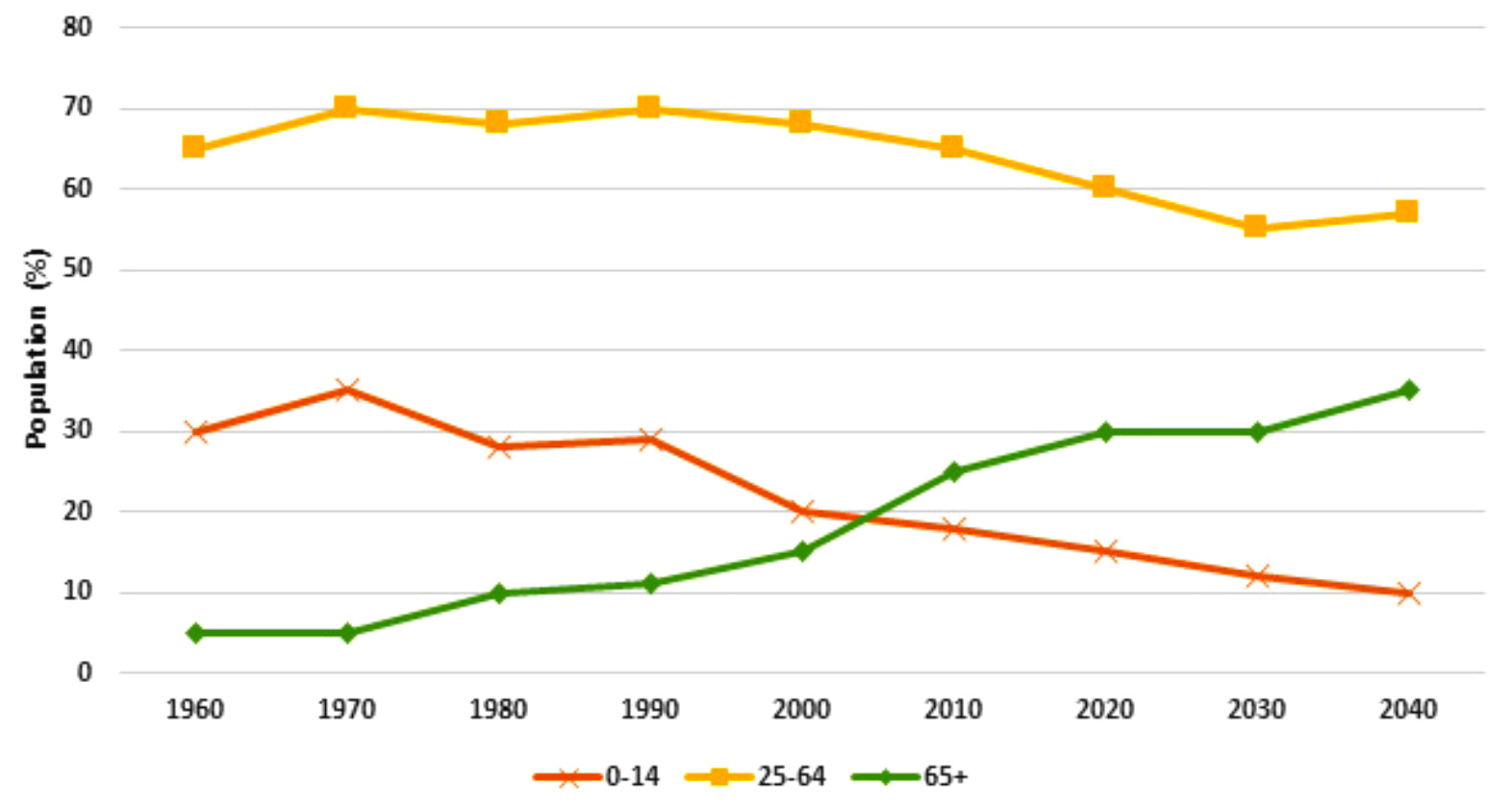IELTS Writing Recent Actual Test 15
WRITING TASK 1
You should spend about 20 minutes on this task
The chart below shows the Japan’s population by age groups starting in 1960 and including a forecast to 2040.
Write at least 150 words.

WRITING TASK 2
You should spend about 40 minutes on this task
Write about the following topic:
Organized tour to remote areas and community is increasingly popular. Is it a positive or negative development for the local people and the environment?
Give reasons for your answer and include any relevant examples from your own knowledge or experience.
Write at least 250 words.
SAMPLE ANSWER IELTS WRITING TEST 15
The line graph illustrates the percentage of the Japanese population in different age groups from 1960 until now, and projections for the year 2040.
Overall, the percentage of people aged 0-14 and 15-64 follows downward trends over the period shown. The opposite trend, however, can be seen in the percentage of those aged 65 and over.
Starting at about 65% in 1960, the proportion of people between 15 and 64 years old hovered during the next 40 years before falling to around 60% in 2018. This figure is predicted to experience a fall to about 52% by 2030, and finally will constitute around 55% of the total population of Japan in 2040. The figures for those aged 0-14 follow a somewhat similar pattern, which began at 30% in 1960 and is estimated to drop to about 10% by 2040.
In contrast, the percentage of Japanese people aged 65 and above was only 5% in 1960. However, the figures witnessed a significant increase to just under 30% in 2018, and by 2040, it is forecast that approximately 35% of Japan’s population will fall into this age group.
(186 words)
In recent years, there has been a growing tendency for tourists to travel to remote locations and communities on organised tours. This has some positive impacts on the local people, but I think the detrimental effects on the environment are more significant and that the issue is more of a negative development.
The financial and socio-cultural benefits for the locals in remote areas are evident. Tourists visiting these regions have a high demand for goods and services, and are mostly willing to pay higher than average prices. This helps to boost local economies in remote areas and eventually enhance living standards of the local people. Regarding the socio-cultural aspects, Travelers from different cultures can provide ethnic people in remote areas, who are almost completely isolated from the outside world, with a lot of experiences through their interactions with one another, which can help these local residents to broaden knowledge about a more civilized society.
However, the hordes of tourists to remote regions still leave severe impacts on the environment in these areas. In fact, tourists often liter where ever they go and do not bother to clean after themselves in areas they have visited. This may lead to such conditions as dirty roads or clogged sewage systems in these places, which negatively and directly affects local people’s living conditions. In terms of indirect effects, I believe that the indigenous people have to sacrifice their natural resources to accommodate tourists’ insatiable demands. In several mountainous areas of Vietnam, local people cut down vast areas of forest to make handicrafts or furniture for tourists. These acts can contribute to the environmental deterioration in remote areas.
In conclusion, though the economy and societies in remote areas can benefit tremendously from organised tourism, I think that the negative environmental consequences that this situation brings are far more significant.
(304 words)
